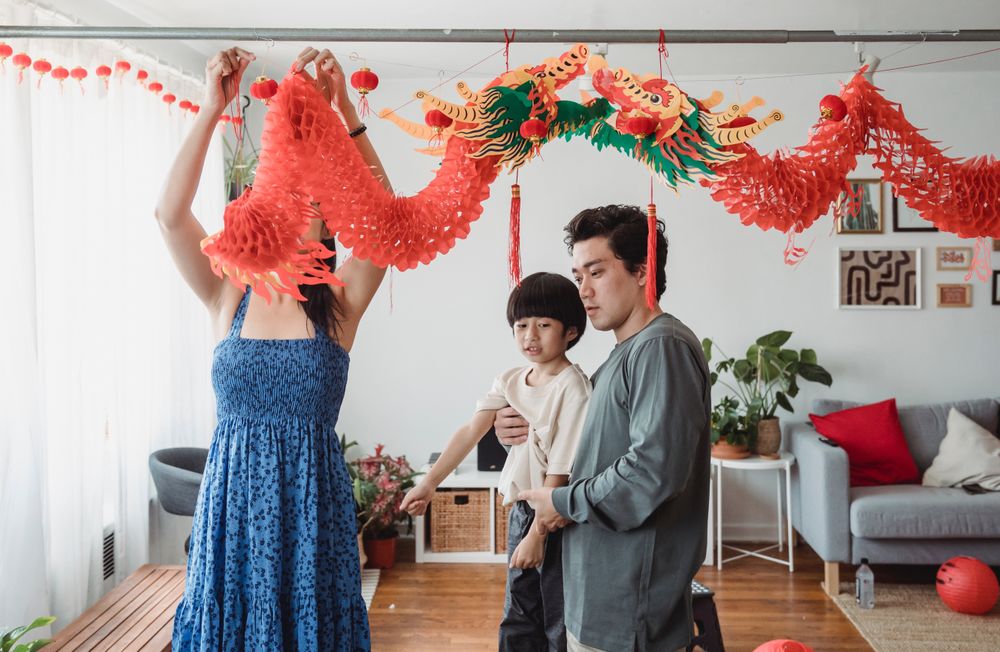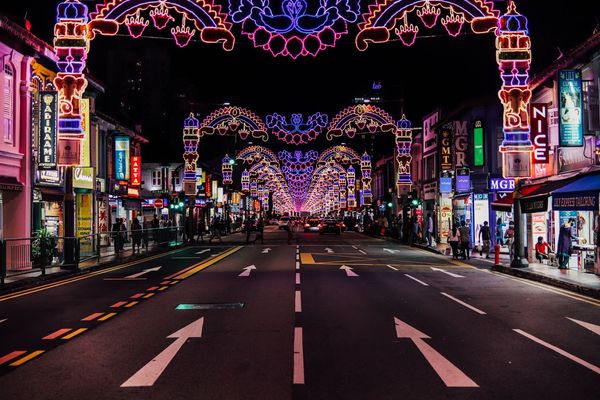Celebrate The Year Of The Tiger With These Chinese New Year (CNY) Traditions
Omicron might have put a dampener on CNY celebrations in Singapore, but don’t fret. Here are a few ways you can keep Chinese traditions alive and celebrate CNY with your party of 5.
For many of us in Singapore, the annual two-day Chinese New Year holiday was the golden opportunity for festive family reunions and short-getaways. While this year’s celebrations will no doubt be a little different due to the safe-distancing regulations in place, it doesn’t mean that it can’t be as fun or as meaningful.
Here are some ways you can celebrate tradition safely and still share the joy with your family, friends and even flatmates!
Spring clean to rid your home of back luck
Packing and cleaning your house before CNY symbolises the washing away of bad luck and misfortune of the previous year in preparation for better ones.
While tidying your home, don't forget to clear out your closet, kitchen and storeroom of items that no longer ‘spark joy’. If they are in good condition, we suggest donating them to your local charities such as Pass-It-On or Greensquare to minimise waste and give those items a new lease on life. Alternatively, you could also make a quick-buck or two by selling them online or to your nearest second-hand shop.
Pro-tip: When donating or reselling your items, be sure to do so safely. By that we mean, minimising face-to-face meet-ups and choosing the delivery and/or drop-off option if available.
Usher in blessings with bright home decorations
After tidying your home, it is time to adorn it with auspicious CNY decorations! Most festive home decorations are in red as it is a lucky colour in Chinese culture. In addition, it also symbolises happiness, beauty, vitality, good fortune and success.
Lanterns
Chinese lanterns are one of the most common decorations during CNY because it symbolises wishes for a brighter future. While you can easily find paper lanterns being sold everywhere, try making them yourself this year by using last year’s leftover red packets.
Door couplets and upside down fu (福) characters
Even numbers have positive connotations in Chinese culture, which is why new year wishes are posted in a pair on each side of the main door. In addition, an upside down fu (福), which means good fortune, is placed on top of the door frame or on the door. There is a superstitious belief that when fu is placed upside-down, good fortune will pour out into the household.
You can easily get these decorations for your home at your usual supermarket, or nearby SKP or Daiso.
Kumquat tree
For those who’ve been living in Singapore, these are the beautiful ‘mini orange trees’ that are found decorating the main entrances of shopping malls or hotels during Chinese New Year.
Over the years, it has gained popularity because its Cantonese name (gam gat, 金橘) sounds very similar to the Cantonese word for gold and luck. More than just decoration, these fruits are also often handed out as CNY gifts in even numbers!
Pro-tip: To get the best variety and value for your kumquat tree, we suggest visiting Song Lang Garden nursery, which is just a 2-minute walk from Hmlet Tanjong Katong.

Try your hand at preparing traditional Chinese New Year dishes
As you probably realised, symbolism is a big theme during CNY. This applies not only to customs, home decorations, and gifts but also to the food eaten during the festival. Here are some menus you can try to make or order for a reunion dinner with your housemates this year.
Spring rolls
Golden, crispy and oh-so-satisfying, how can one not love spring rolls?
As its name suggests, spring rolls are typically eaten during the Spring Festival (a.k.a. Chinese New Year). Golden in colour and shaped like gold bars, spring rolls represent wealth and prosperity. They are also extremely easy to make, loved by both the old and young, and are widely available at your favourite local neighbourhood hawker.
Steamed whole fish
If you’ve realised, a CNY feast always includes a whole fish on the menu. Similar to why kumquat trees are important during CNY, fish (yu, 鱼) is a must-have dish because its pronunciation is similar to the word ‘surplus’ (yu, 余) and therefore symbolises it. What’s more, fish is also considered a healthier form of protein that can be consumed by most people. This is what we like to call a win-win situation.
Watch the video below to learn how to prepare a traditional Chinese steamed fish dish in 20 minutes by Angel Wong's Kitchen without a steamer!
Pen cai
Pén cài (盆菜), which translates to Chinese casserole or feast bowl, is a CNY dish that originated from Hakka villages in Hong Kong’s New Territories. The extravagant dish includes up to 20 auspicious ingredients, each one cooked separately before being layered on top of one another in a clay pot to be slow-cooked together again in imperial broth.
As this is a rather time-consuming dish, most opt for ready-made ones. Luckily for us, there are many Chinese restaurants that offer their own version for pre-order before CNY and here are some of our favourites.
- Kam's Roast - Traditional pen chai
- Tam Kah Shark's Fin & Seafood - Traditional and vegetarian pen cai
- Peach Garden - Traditional pen cai
- Crowne Plaza Changi Airport - Lobster pen cai
- Eu Yan Sang - Conveniently packaged pen cai that can be enjoyed even after CNY
For more news and updates about coliving, furniture rental, interior design, community living, home rental and living life unordinary, follow us on social media or subscribe. Learn more about Hmlet at our main website.





